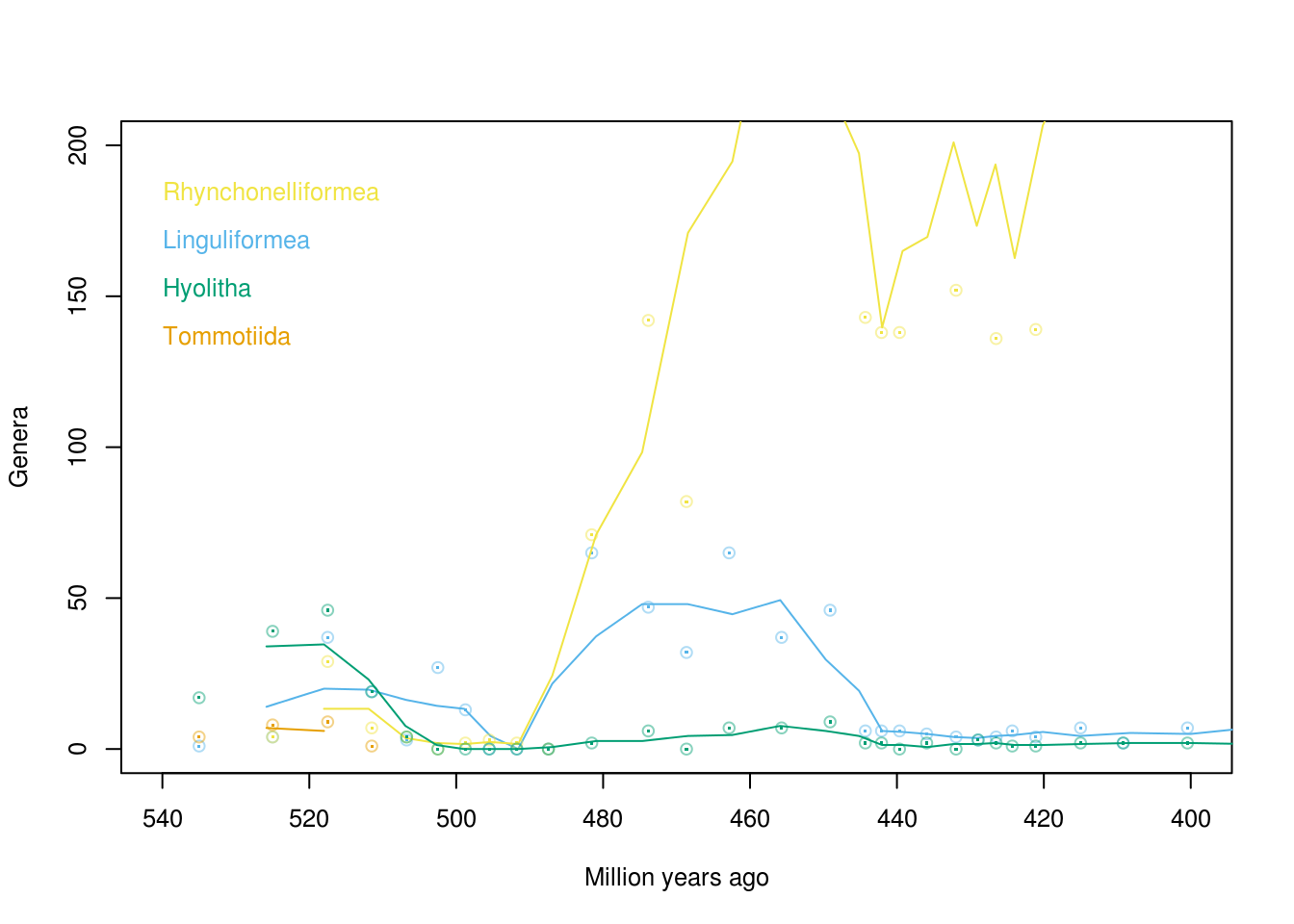Supplementary Figures
 Fig. S1. Pedunculotheca diania Sun, Zhao et Zhu gen. et sp. nov. from the Chengjiang Biota, Yunnan Province, China. (a) NIGPAS 166601, external mould of dorsum with dorsal apex and pedicle foramen. (b) NIGPAS 166597, preserving conical shell, operculum and internal soft tissue, showing a compressed elliptic cross-section; backscatter electron micrograph of boxed region shown in (c). (d) NIGPAS 166599b, counterpart, juvenile conical shell with operculum showing two longitudinal ventral grooves and circular larval shell. (e) NIGPAS 166602, conical shell with incomplete attachment structure. (f) NIGPAS 166598, broken shell with two ventral furrows and incomplete attachment structure. (g) NIGPAS 166596, incomplete shell with one medial ventral furrow and short attachment structure with coelomic cavity; detail of boxed region shown in (h). (i) NIGPAS 166603, exterior of operculum. Scale bars: 2mm (for a, b and e–g); 500 µm (for c, h and i).
Fig. S1. Pedunculotheca diania Sun, Zhao et Zhu gen. et sp. nov. from the Chengjiang Biota, Yunnan Province, China. (a) NIGPAS 166601, external mould of dorsum with dorsal apex and pedicle foramen. (b) NIGPAS 166597, preserving conical shell, operculum and internal soft tissue, showing a compressed elliptic cross-section; backscatter electron micrograph of boxed region shown in (c). (d) NIGPAS 166599b, counterpart, juvenile conical shell with operculum showing two longitudinal ventral grooves and circular larval shell. (e) NIGPAS 166602, conical shell with incomplete attachment structure. (f) NIGPAS 166598, broken shell with two ventral furrows and incomplete attachment structure. (g) NIGPAS 166596, incomplete shell with one medial ventral furrow and short attachment structure with coelomic cavity; detail of boxed region shown in (h). (i) NIGPAS 166603, exterior of operculum. Scale bars: 2mm (for a, b and e–g); 500 µm (for c, h and i).
Abbreviations: an = anus, cc = coelomic cavity, da = dorsal apex, es = esophagus, in = intestine, mo = mouth, pe = pedicle, st = stomach.

Fig. S2. Elemental distribution in the gut of Pedunculotheca diania Sun, Zhao et Zhu gen. et sp. nov. NIGPAS 166597. Region corresponds to boxed region in Fig. S1c. Scale bar = 100 µm.
Abbreviations: BE = backscatter electron image, O = Oxygen, Si = Silicon, Al = Aluminium, Fe = Iron, C = Carbon.

Fig. S3. Global diversity of brachiopods through the Paleozoic. Points represent number of genera reported in each time bin; lines represent rolling mean diversity over three consecutive time bins. Data from Paleobiology database.